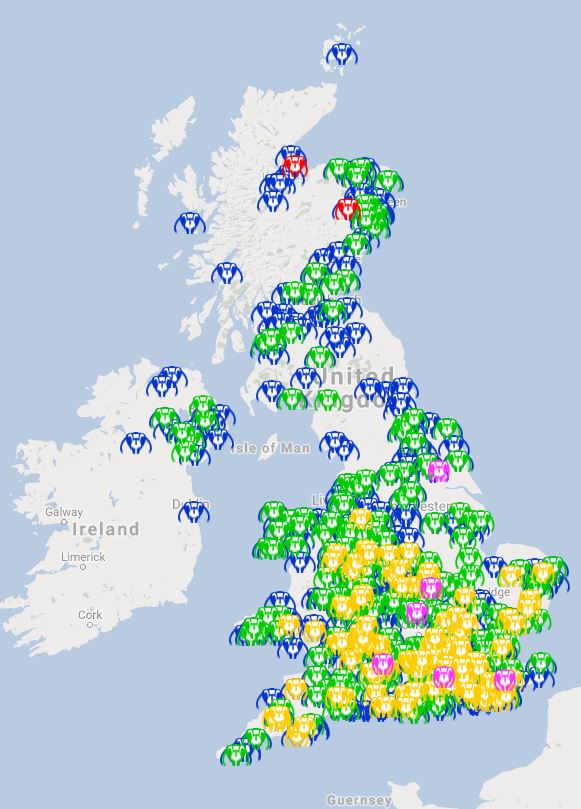
Thank you to those who took part in the three years of the Big Wasp Survey. We are delighted by the level of interest and enthusiasm across the whole of the UK to get involved and contribute. Thousands of you embraced the Big Wasp Survey, providing a snapshot of the life of one of our most vital but poorly understood group of insects in one of the most important habitats in the UK – our gardens.
Here is an update on our results to date.
Big Wasp Survey Generates High Quality Data on Wasp Distributions
Thanks to everyone’s help, and to some serious wasp sorting over the winter, we were able to publish the first BWS scientific paper in the journal Insect Conservation and Diversity. The main findings are summarised below (apologies – we couldn’t afford the open access fees for the journal).
The 2017 survey ran from 26th August to 10th Sept; 2377 people registered to take part, and 54.4% (1294) of these people submitted their results. Of these, 551 traps (42.5%) contained wasps, representing 548 postcodes across the UK; 6680 wasps could be identified to species level; a further 180 wasps from 39 traps were too damaged to identify.
Three species dominated: the common yellowjacket wasp Vespula vulgaris accounted for 44% of wasps (2942 wasps in 407 traps); the German yellowjacket wasp Vespula germanica accounted for a further 44%. (2974 wasps in 251 traps); and the European hornet Vespa crabro accounted for 6% of the sample (395 wasps in 100 traps) (see Fig 1). We also detected small number of Vespula rufa (2 in 2 traps) and Dolichovespula media (9 wasps in 6 traps).

We’re currently analysing the 2018 data; see an update here.
We’ve just started processing the 2019 wasps: sign up to help us at one of our free workshops!
